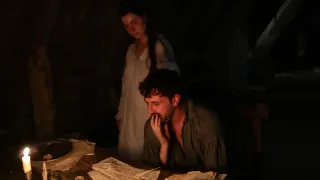
5 hours ago
The Kid LAROI Ushers in a New Era With "Before I Forget"
READ TIME: 4 MIN.
The Kid LAROI, the Australian-born superstar who shot to global prominence at a young age, has entered a new chapter in his career. On November 20, 2025, he announced his third studio album, "Before I Forget," slated for a January 2026 release, accompanied by the soulful lead single "A Perfect World" . This announcement followed a period of significant personal and creative upheaval for the artist, culminating in a bold decision to scrap an entire completed album in favor of a project that more honestly reflects his current self .
"A Perfect World" showcases LAROI’s willingness to strip back production and foreground emotional authenticity. The song’s R&B-infused arrangement supports lyrics that grapple with heartache and longing: “In a perfect world we'd have it all figured out / Baby, you would be my girl, ” he sings, setting the tone for the album’s exploration of nostalgia, regret, and the complexities of love . The choice to lead with such a vulnerable track signifies a marked shift from his earlier work, which was often characterized by swagger and bravado.
LAROI’s decision to share this more introspective side was not made lightly. In a candid Instagram post, he explained, “I had a whole other album that was completed but I scrapped it. Started again from scratch with the exception of 1 song. It’s my favorite thing I’ve ever made. It’s also the most personal thing I’ve ever made” . The visual motif of the album—LAROI submerged in cold water—mirrors the project’s themes of isolation and emotional depth .
The lyrics of "A Perfect World" reflect a journey through heartbreak, self-reflection, and the desire for reconciliation: “I was surprised when I heard what you were saying about us / Thought we were tied, baby, I would never play about ya. .. I fantasize ‘bout the day that we could make it right / I’ll give you time, time, for you to think about it” . The repeated plea, “If you wanna talk sometimes, ” offers a poignant window into LAROI’s longing for honest communication and closure.
While fans have speculated that these confessions are inspired by his past relationship with fellow artist Tate McRae, LAROI’s message resonates more broadly, capturing the universal process of grappling with loss and yearning for connection . This embrace of vulnerability, especially from a male artist in popular music, expands conversations around masculinity and emotional honesty in the industry.
The backstory of "Before I Forget" is as compelling as its lyrical content. LAROI’s decision to discard a completed album signals a commitment to authenticity over commercial expectation. According to his public statements, this artistic about-face was motivated by a realization that the earlier material “no longer represented who he was as an artist” . The new project was written and recorded in just four months—a testament to a period of intense personal transformation .
This process of self-discovery is reflected not only in the music but also in LAROI’s public persona. By openly discussing his struggles and growth, he encourages his audience—many of whom are young and navigating similar journeys—to embrace self-reflection and healing.
Although The Kid LAROI does not publicly identify as LGBTQ+, the themes of "Before I Forget" hold resonance for LGBTQ+ listeners and communities. The album’s focus on honesty, vulnerability, and the courage to start anew aligns with core values celebrated within LGBTQ+ culture. Music has long been a space for LGBTQ+ individuals to find solace, representation, and empowerment, especially in narratives of overcoming adversity and embracing one’s true self.
The pop and R&B landscape, in which LAROI is an influential voice, has increasingly prioritized inclusive storytelling and the dismantling of rigid gender norms. His willingness to foreground emotional openness and reject stereotypes of masculinity creates space for broader representation and dialogue. For LGBTQ+ fans, seeing global male artists model self-acceptance and emotional literacy can be affirming and inspiring .
Moreover, the universality of heartbreak, longing, and personal growth in LAROI’s lyrics ensures that listeners from all backgrounds can find points of connection. The album’s message—that it is never too late to redefine oneself, heal, and reach for authentic happiness—is particularly resonant for those who have faced marginalization or struggled with self-acceptance.
The cover art for "Before I Forget," which features The Kid LAROI submerged in water, serves as a metaphor for emotional immersion, struggle, and rebirth . Such powerful imagery reinforces the album’s central themes and invites listeners to interpret the project through their own lived experiences.
LAROI’s recent live performances, including a halftime show in Germany where he debuted "A Perfect World, "have also embraced a stripped-back, emotional aesthetic, further signaling his commitment to connecting with audiences on a deeper level .
"Before I Forget" is slated for release on January 9, 2026, via Columbia Records. LAROI has also announced an international tour to support the album, with dates scheduled in the United States, Saudi Arabia, and Australia . This global rollout underscores his status as a major figure in contemporary music and sets the stage for what promises to be a defining era in his career.
As anticipation builds, fans and critics alike are eager to see how LAROI’s embrace of vulnerability will shape the album’s full narrative—and how this new artistic direction will influence the broader pop and R&B landscape.
The Kid LAROI’s "Before I Forget" is more than just an album announcement; it is a statement of intent from an artist willing to break with convention and share his most personal truths. By inviting listeners into his world of reflection, heartbreak, and hope, LAROI exemplifies the power of music to foster empathy, connection, and personal growth for audiences of all identities.






